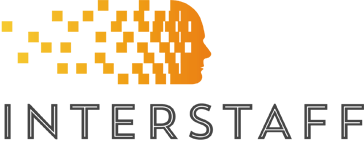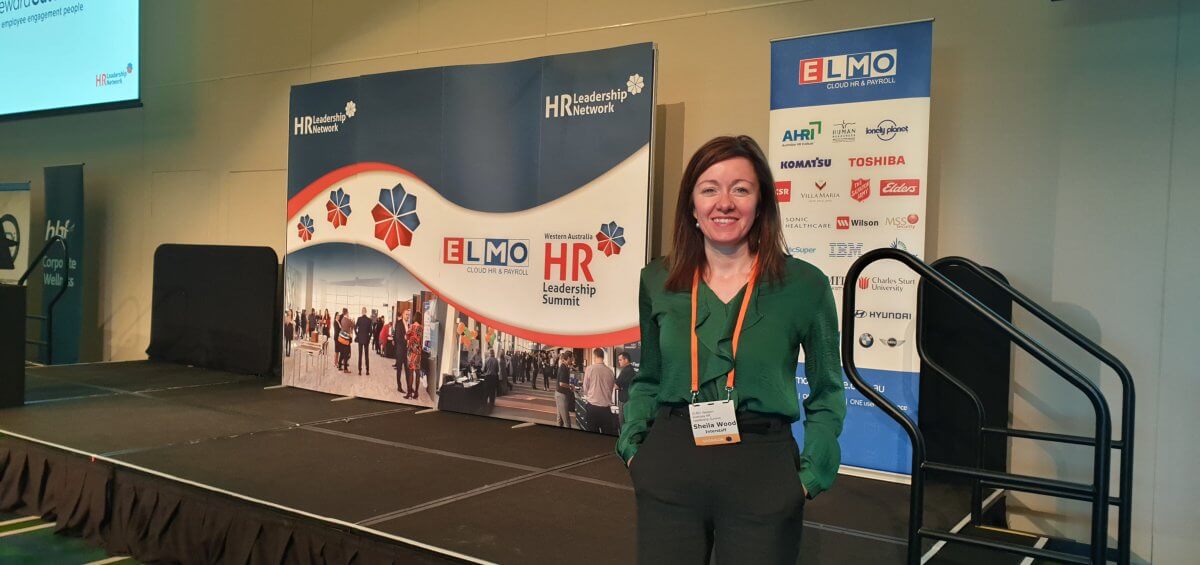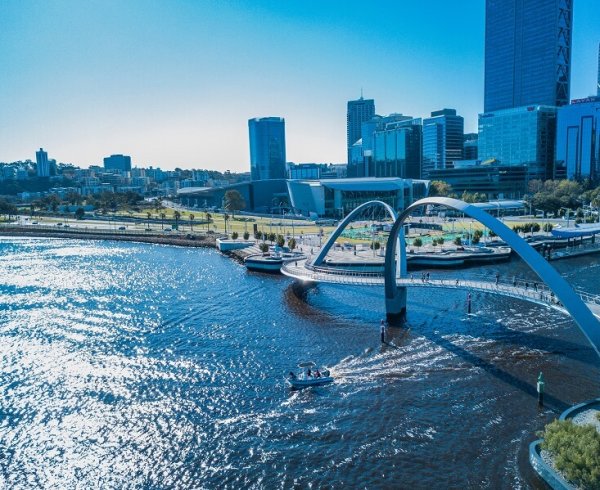Changing Skilled Migration Landscape | We have certainly seen a number of changes to Australia’s migration landscape since Interstaff was first established in 1988 three decades ago. One of the most significant changes recently has been the replacement of the 457 Visa scheme with the Temporary Skills Shortage (TSS) Subclass 482 Visa. The 457 Visa program was historically the most commonly used program to sponsor skilled overseas workers for temporary work in Australia and its replacement with the 482 Visa has meant Human Resources teams and business owners must now navigate new challenges to attract and retain top overseas talent, while skilled visa holders need to meet new restrictive eligibility criteria for temporary and permanent skilled visas.
Significant changes to employer-sponsored visa options
For the past twenty years, Australia’s working visa program provided a range of visa options that gave relative certainty for employees to transition to permanent residence when sponsoring international workers on temporary visas. As you can see below, a typical path involved a business sponsoring a skilled worker on usually a four year working visa with the certainty of permanent residence availability after two years of employment within the business.
Although there were some complexities in the system, for the most part, the business and migrant community understood the availability of pathways to permanent residence and most operated on the basis that after two years the skilled worker and their family could transition to a permanent visa if the position remains ongoing and the business could sponsor. Skilled applicants were therefore drawn to the prospect of working with an Australian sponsor and employers could attract and retain suitably skilled talent.
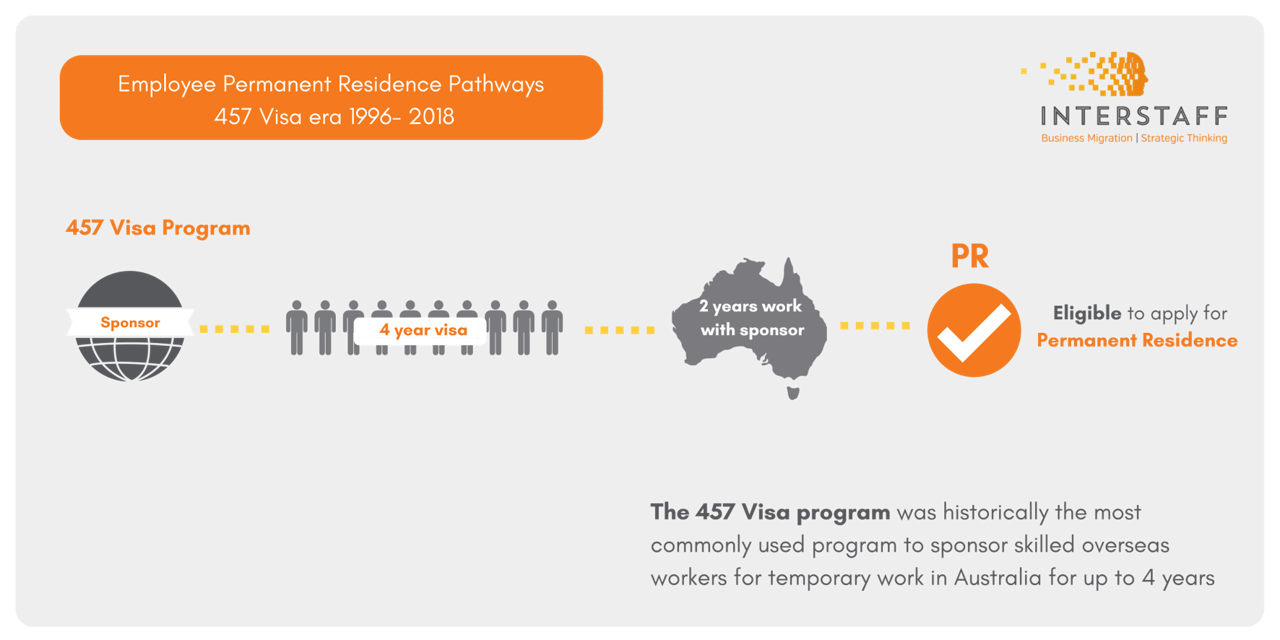
Since April 2017, when the Federal Government announced the 457 visa would be abolished, changes to Australia’s employer-sponsored visa programs resulted in a fundamental shift in the way Australia’s migration policy seeks to alleviate labour gaps in the Australian economy.
Changing the skilled migration landscape continued with the replacement of the TSS or 482 Visa with the 457 visa in March 2018, with the final draft of changes in August 2018. As you can see below, the TSS visa divides skilled migrants into streams aligned with their ‘skilled occupation’. The short-term, two year stream is available for people who are qualified and experienced in one of the 242 occupations on the Short Term List, while people with one of the 208 occupations on the Medium Term List may be eligible for the four year stream. Over 200 occupations were removed by the changes so the TSS program is considerably narrower in scope than its predecessor.
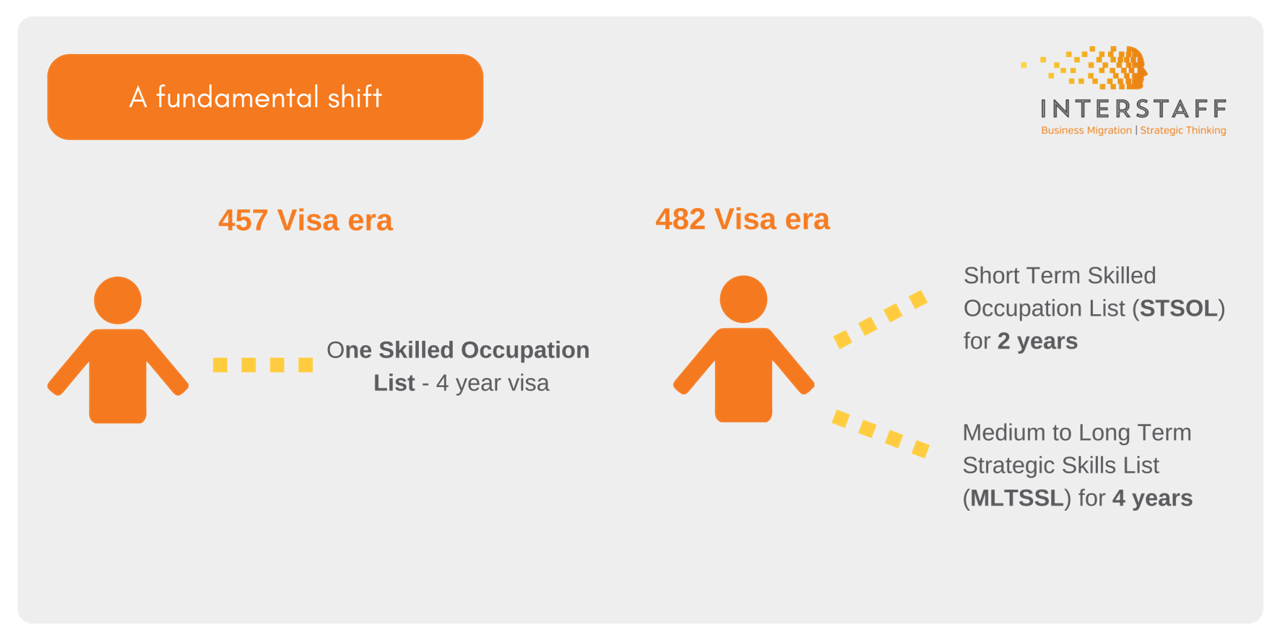
The TSS/482 regime also replaced sponsor training benchmarks with a hefty, and in most cases non-refundable “Nomination Training Contribution Charge,” which now applies to all applications. This charge is paid into the new ‘Skilling Australians Fund,’ which the Commonwealth, in partnership with the states and territories, seeks to fund the training of young Australians in vocational trades.
Skilled migrants are placed into two streams with different permanent residence options depending on their occupation
The TSS Short Term stream introduces a guest-worker concept to Australia’s employer sponsored visa program whereby applicants can obtain a work visa for 2 years but only extend it once – for a further two years – and are excluded from permanent residence pathways.
Only the Medium Term stream visa holders can access permanent residence, however even for those, changes to 186 and 187 employer-sponsored visa programs have extended the time that visa holders must work in their sponsor’s business from 2 years to 3 years and introduces a requirement for their occupation to remain on the list at the end of that 3 year period. This introduces a new level of uncertainty and planning limitations as the occupation lists change twice each year.
Employers now face a challenge in managing the uncertainty created by these changes and also in developing a policy to attract talent and remain competitive without the ability to provide certainty to relocating international employees. All this at a time when other first world economies – Canada, New Zealand and potentially the UK after Brexit – are seeking to attract the same migrants.

Reimagining skilled migration in Australia’s current landscape
Outside of the employer sponsored migration program, Australia has a long running ‘General Skilled Migration’ program – this is the points tested visa group, which has traditionally made up most of the skilled migration program in the past 25 years.
This program has received little attention from employers in the past, because employer visa options were relatively straight forward and the ability to obtain permanent residence after two years a 457 Visa through employer sponsored pathways, regardless of whether your occupation remained on the Skilled Occupation List, meant there was little incentive to look around at Australia’s other visa options for permanent residence pathways for skilled international employees.
Visas in this part of the migration program do not require an employer to sponsor which means the Nomination Training Contribution Charge or SAF does not apply. The main visas are the 189 and 190 visas and they could become part of a strategy to transition overseas employees to permanent residence and remove the uncertainty a three-year wait could create for employees and their families.
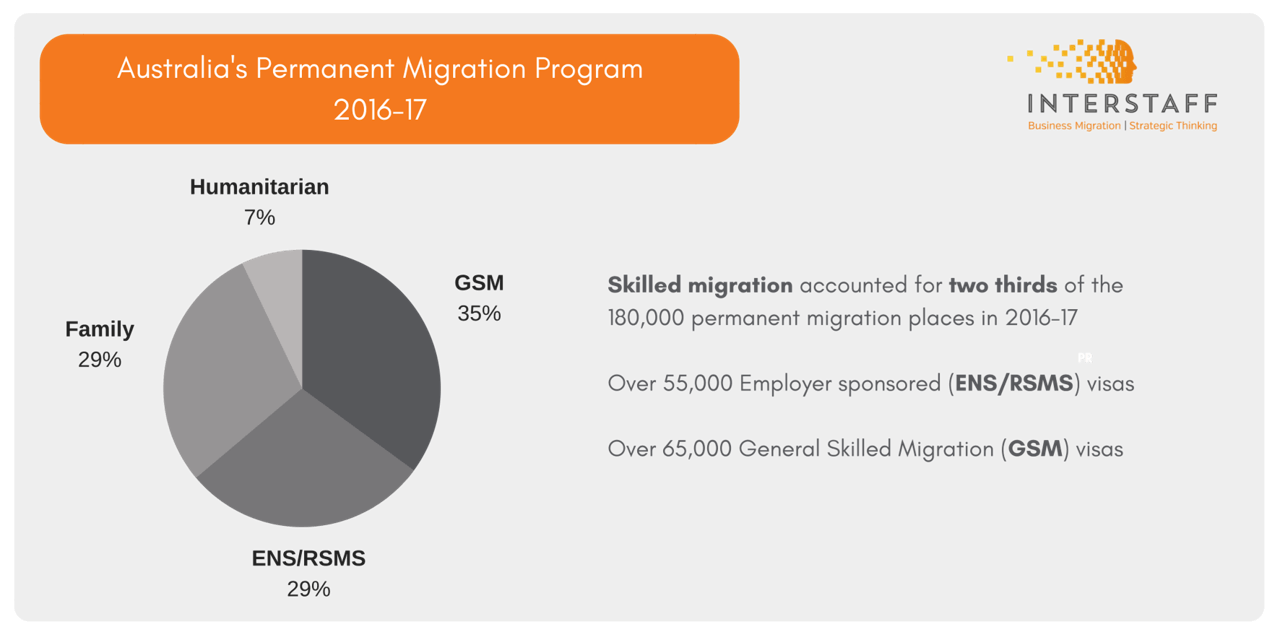
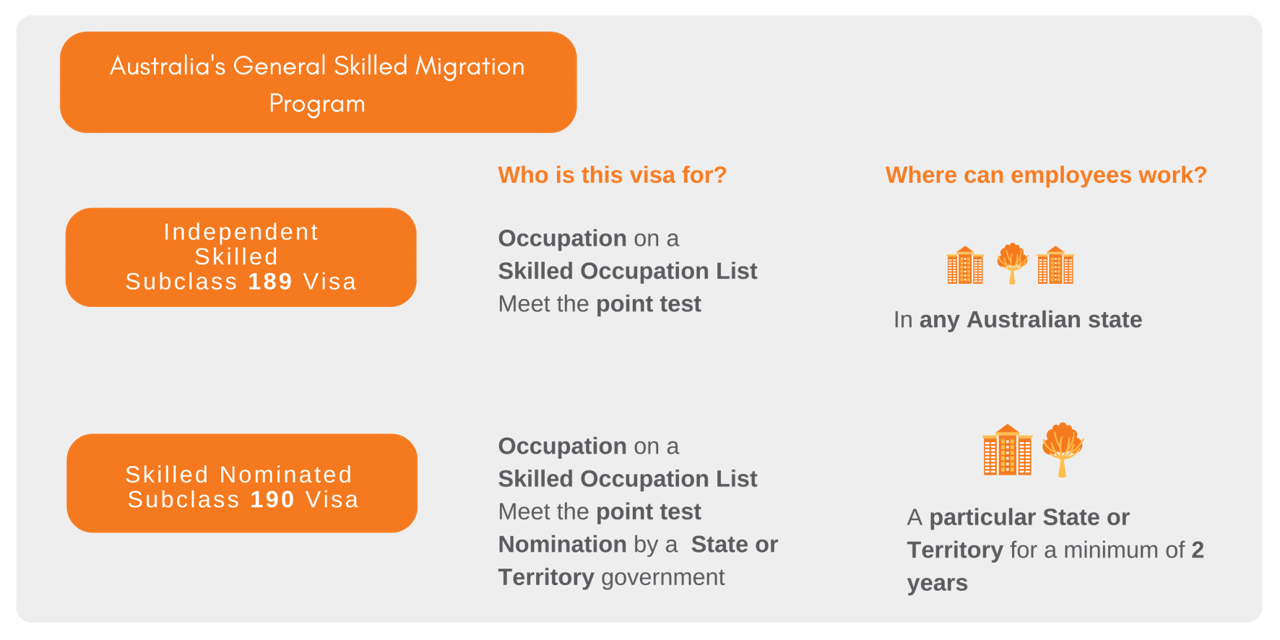
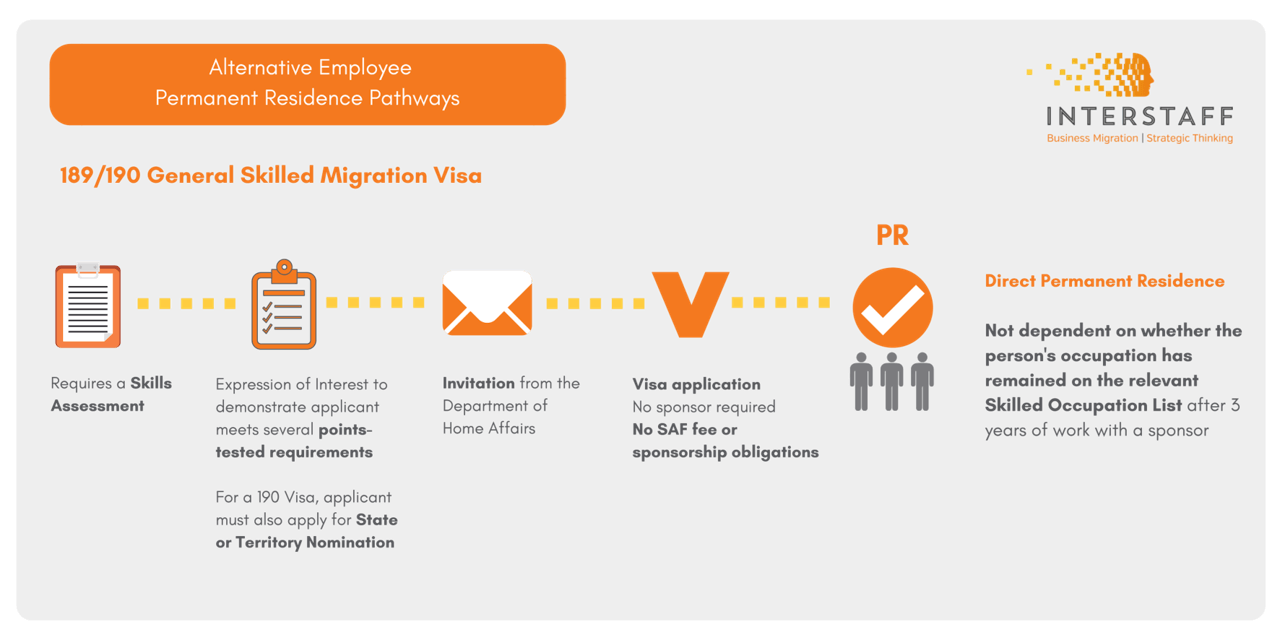
The General Skilled Migration program as an alternative permanent residence option for employees
The GSM program operates by selecting migrants with the use of a points test. Points are allocated for a range of things including age, English ability and work experience. Again, the applicant’s occupation provides the gateway to eligibility for these visas. To satisfy the points test applicants must have their skills formally assessed before ‘expressing their interest’ to the Australian government signalling their intention to apply. Upon receipt of an invitation from the federal government, a visa application can be submitted. GSM options are especially attractive for degree qualified professionals and skilled trade employees.
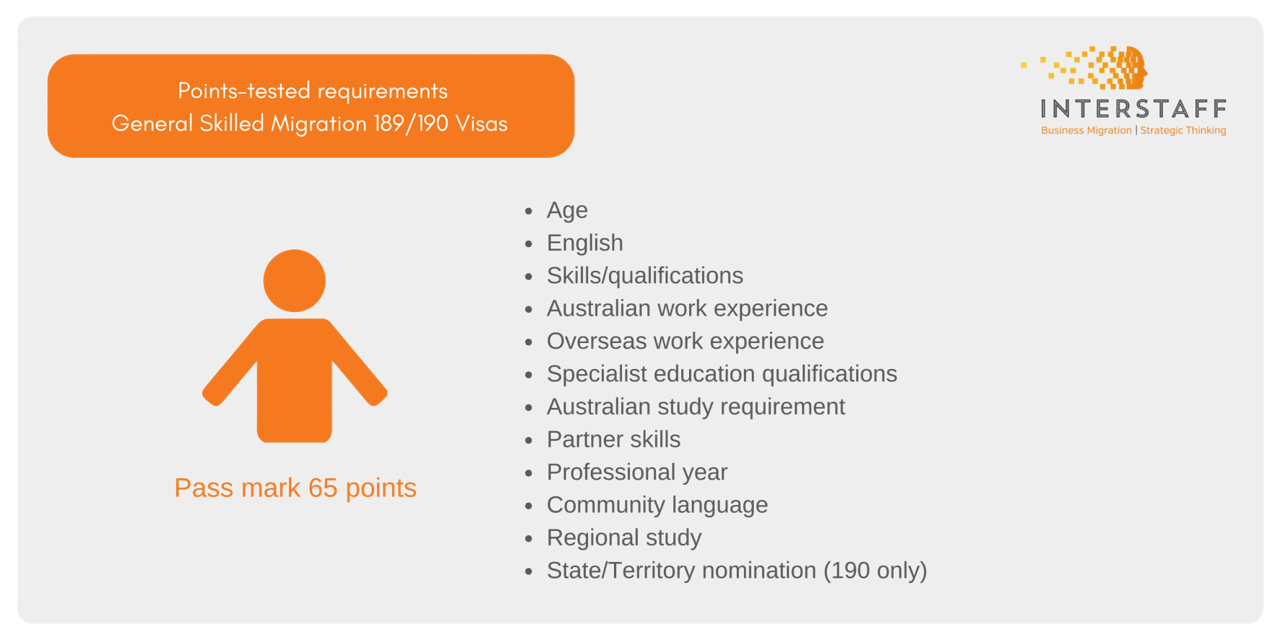
Let’s take an example. Eugene is a thirty year old British software developer with five years’ work experience overseas who has already been working with an Australian business on a 482 in Australia for one year and his points would apply in this way. Eugene’s points for English could change depending on his English test results, which is why the numbers differ below. Eugene could obtain a skills assessment in three months and obtain an invitation to apply for the visa within six months. After a further 11 months the visa could be finalised.
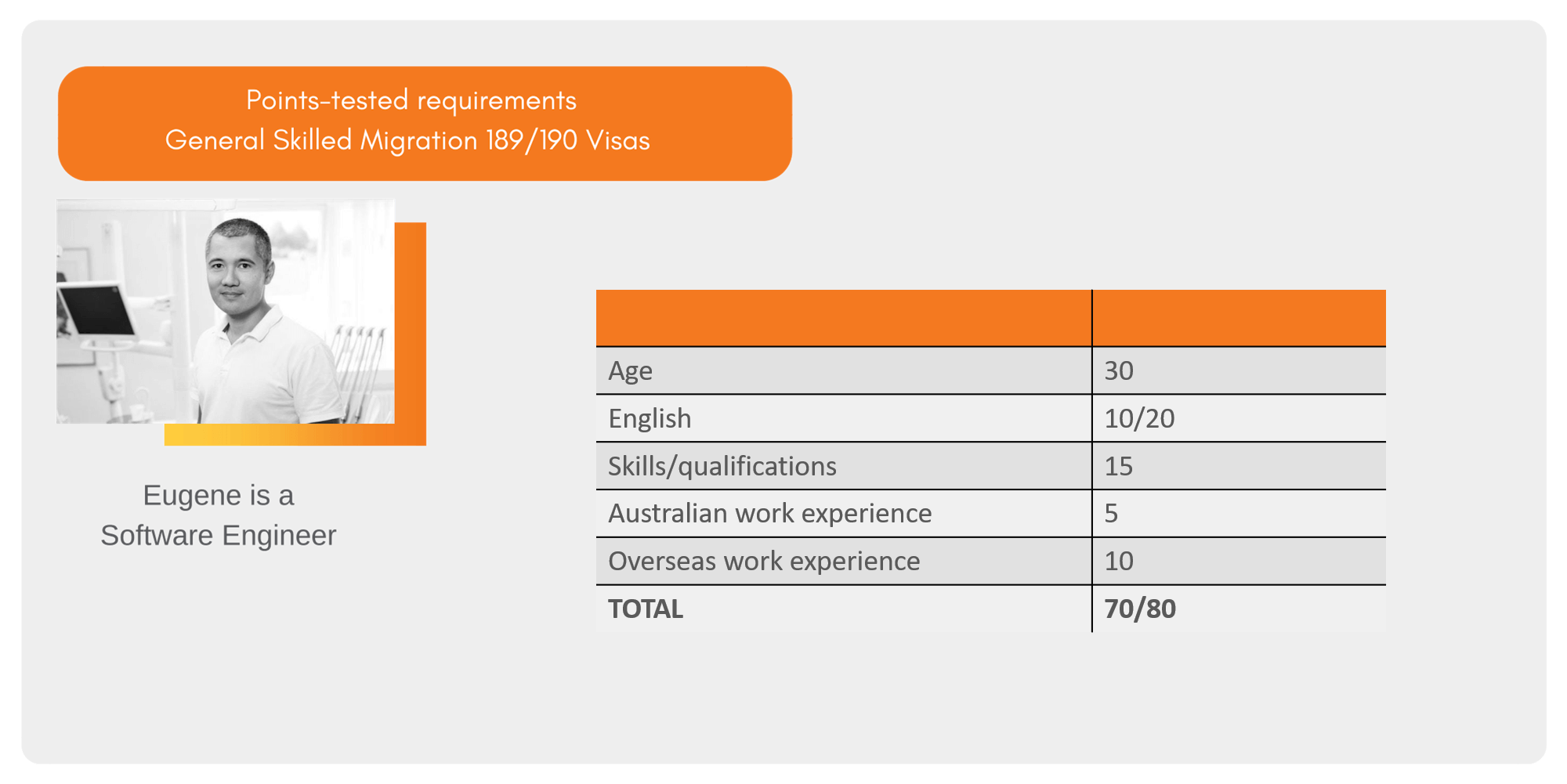
The Direct Entry 186 and 187 Employer Sponsored Visas as an additional permanent residence option
A further option not traditionally relied upon by businesses is actually within the current employer-sponsored program: ‘Direct entry’ permanent residence pathways would also be an option for Eugene to apply for residence without any waiting period – without waiting for three years. Like the General Skilled program, applicants here must first obtain a skills assessment, which is one reason this visa pathway has not been utilised in the past. Once lodged, the uncertainty of any later occupation list change is removed and though the waiting time is significant in this stream – currently 19 months – bridging visa rights apply. It may be feasible for employers to plan for submitting this type of permanent residence in the first year that your employee holds a 482 visa, especially if planned from the outset.
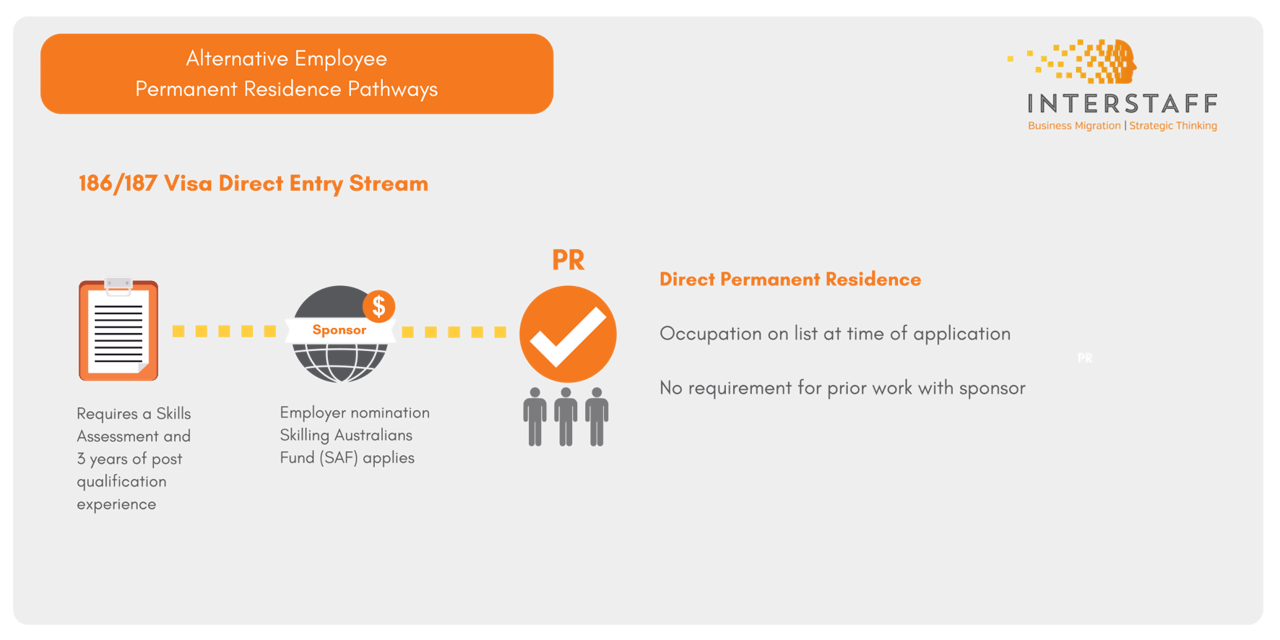
Comparison of General Skilled Migration vs 186/187 Permanent Residence Options for employees
The statutory application costs and time-frames for General Skilled Migration visas and Direct Entry Employer visas are illustrated here – the key difference is the cost of the Nomination Training Contribution Charge.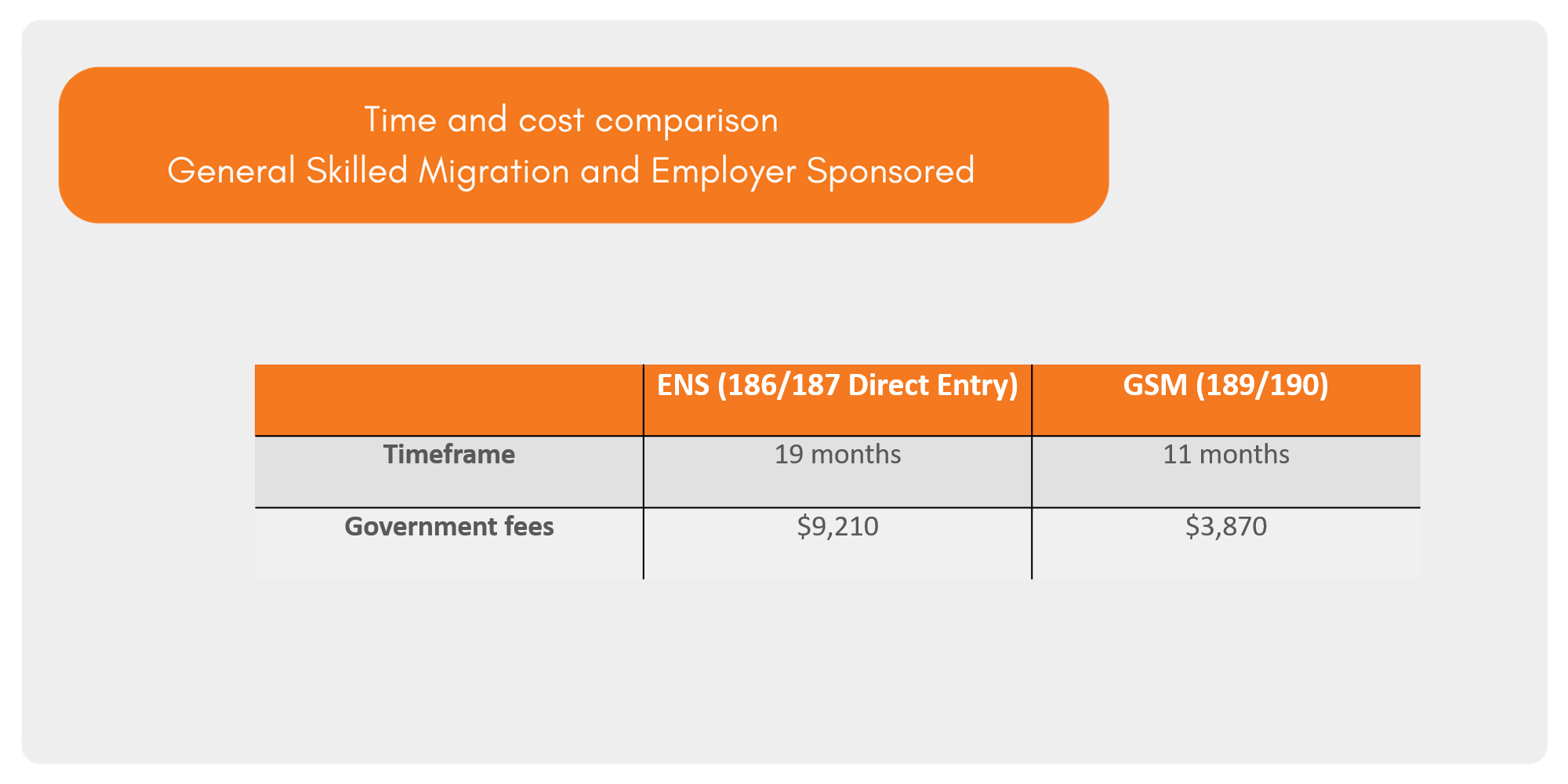
Working out what options employees can use is best done early – perhaps up front at the time of engagement. Understanding that it is not always a requirement to wait for 3 years but an option amongst a number of options will open up a conversation and may also change your decision about the number of years nominated on a 482. Age limits, family composition and occupation all impact the nature of this conversation as pathways will be cut off when employees reach the age of 45 or when their children reach the age of 18 or 23. An awareness of visa options that are available other than the 3 year transition pathway will be vital for these employees.
What about permanent residence for those on the 2 year 482 Visa?
What about the options for those on the 2-year 482 visa? Can they obtain permanent residence? In limited circumstances – perhaps through regional sponsorship options – it is best to seek professional advice as early as possible. 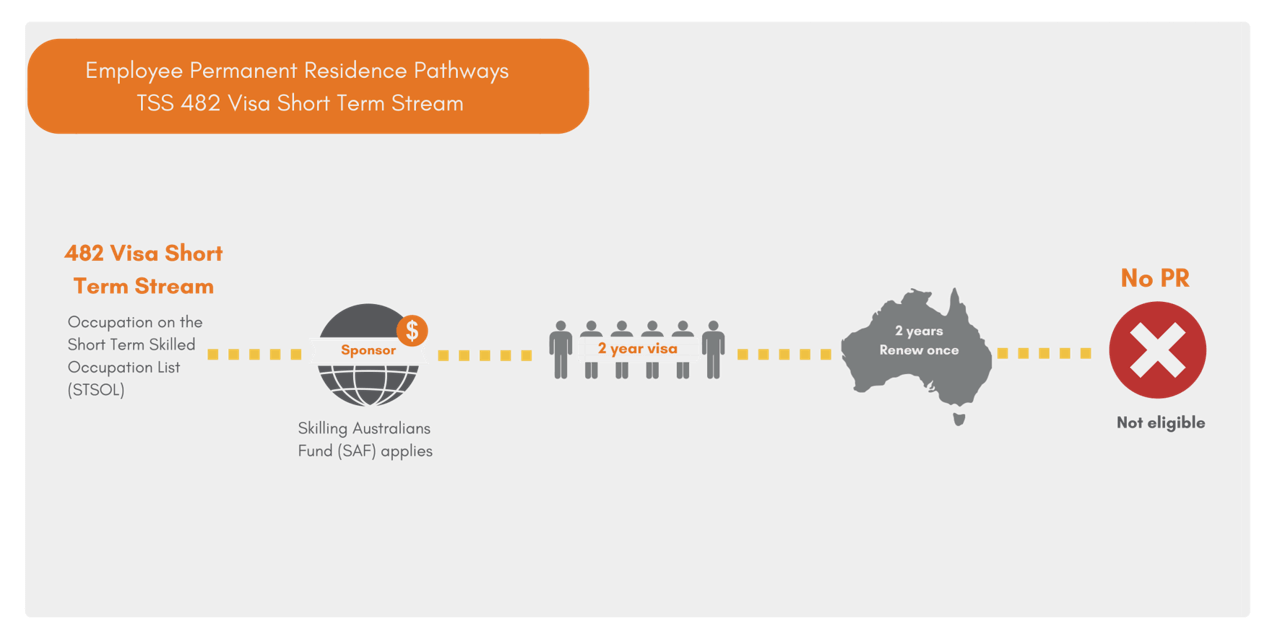
How our team of Migration Agents Can Assist You with the Changing Skilled Migration Landscape
Despite the nature of the significant shifts in Australia’s migration program in the last two years, there are non-traditional permanent residence options to explore and with early planning and assessment, these options can provide more cost effective solutions and importantly, greater certainty for your business and its international employees.
Our team of Registered Migration Agents have specialised in business migration requirements for 30 years since 1988. Read about Interstaff and our industry experience or click here to access to our visa tools developed for employers of visa holders. To discuss your visa or sponsorship options, we encourage you to contact our team on +61 8 9221 3388 (or National Free Call 1800 449 858) or [email protected]
Source:
